Best Books About the History of Wall Street and the U.S. Economy
5 Books That Explain the History of the U.S. Economy
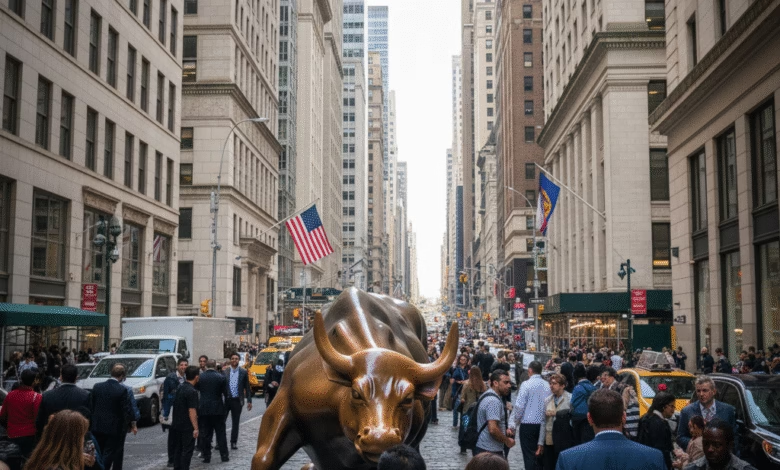
To understand America is to understand its economy. The story of the United States is inextricably linked with the ambitions, innovations, and occasional-to-frequent manias of Wall Street. From the buttonwood tree where the first traders gathered to the complex digital networks that now span the globe, the world of finance has shaped the nation’s fortunes, creating immense wealth and triggering devastating crises. For the average person, this world can seem opaque, intimidating, and shrouded in jargon.
But what if you could pull back the curtain and witness the pivotal moments that defined American finance? What if you could learn from the high-stakes drama, the larger-than-life characters, and the timeless lessons of history? The best way to do this is by immersing yourself in the stories told by masterful authors who have dissected Wall Street’s most critical chapters.
This curated list of five essential books will take you on a journey through the history of the U.S. economy. These are not dry academic texts; they are riveting narratives filled with ambition, greed, genius, and folly. Reading them will provide you with a profound understanding of how we got here, from the Gilded Age to the digital age, and equip you with the wisdom to navigate the financial world of today.
1. A History of the United States in Five Crashes by Scott Nations
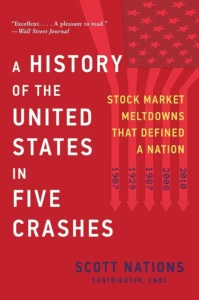
Understanding Modern America Through Its Financial Crises
To grasp the full sweep of American economic history, there is no better starting point than its moments of greatest turmoil. Veteran financial engineer and historian Scott Nations provides a brilliant and accessible narrative that connects the dots between five seminal market crashes and the regulatory world we live in today. “A History of the United States in Five Crashes” is a masterclass in showing how financial disasters are not isolated incidents but part of a recurring pattern of innovation, speculation, and eventual collapse.
This book is perfect for the reader who wants a comprehensive yet engaging overview of the most significant financial panics that shaped the nation. It demystifies complex events and clearly illustrates the cause-and-effect relationship between crisis and reform.
The Five Defining Moments
Nations structures his narrative around five pivotal events, each revealing a different facet of the American economy’s evolution.
- The Panic of 1907: This was the crisis that revealed the nation’s desperate need for a central bank. Nations vividly portrays a chaotic America where the financial system was at the mercy of powerful financiers like J.P. Morgan, who single-handedly had to bail out the country. The book expertly details how the fallout from this panic led directly to the creation of the Federal Reserve in 1913, forever changing the government’s role in the economy.
- Black Tuesday (1929): The most infamous crash in history, this chapter explores the giddy speculation of the Roaring Twenties and the devastating collapse that ushered in the Great Depression. Nations explains the mechanics of the crash, from leverage and margin calls to the psychological mania that gripped the public. He then shows how this cataclysmic event led to the creation of the Securities and Exchange Commission (SEC) and landmark financial regulations like the Glass-Steagall Act, which formed the bedrock of American financial law for decades.
- Black Monday (1987): A terrifyingly fast crash in the modern era, Black Monday saw the Dow Jones Industrial Average lose nearly 23% of its value in a single day. Nations dissects the role of new technologies like portfolio insurance and computerized trading, which accelerated the panic. The key lesson from this event was the introduction of “circuit breakers”—market-wide trading halts designed to give investors a moment to breathe and prevent a technology-driven death spiral.
- The Dot-Com Bubble Burst (2000): This chapter explores the irrational exuberance of the internet age, a time when company valuations became detached from reality. It’s a fascinating study in market psychology and the hype that can surround transformative technologies.
- The Flash Crash of 2010 & The 2008 Financial Crisis: Nations ties the story together by examining the most recent major crises. He breaks down the complex derivatives, subprime mortgages, and systemic risks that led to the 2008 meltdown, the most severe economic crisis since the Great Depression. He also explores the bizarre 2010 Flash Crash, where markets plummeted and recovered in minutes, revealing the fragility of our increasingly automated and high-frequency trading world.
By reading this book, you will understand that nearly every major financial institution and regulation in America today was born from the ashes of a previous disaster. It’s an essential read for understanding the cyclical nature of booms and busts.
2. Liar’s Poker by Michael Lewis
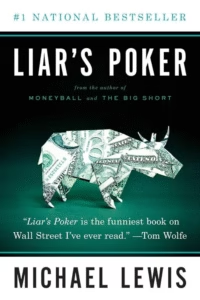
A Hysterical and Horrifying Look Inside 1980s Wall Street
Before Michael Lewis became the celebrated author of “The Big Short” and “Moneyball,” he was a young, ambitious art history graduate who stumbled into a job at the legendary investment bank Salomon Brothers. “Liar’s Poker,” his 1989 debut, is a semi-autobiographical, jaw-droppingly candid account of his time in the testosterone-fueled, billion-dollar jungle of the Wall Street bond desk.
This book is a cultural touchstone. It’s a hilarious and often terrifying look at the characters, the greed, and the nascent beginnings of the mortgage-backed security—the very financial instrument that would nearly destroy the global economy two decades later. It’s a must-read for anyone who wants to understand the culture of Wall Street.
Key Takeaways and Historical Significance
“Liar’s Poker” is more than just a collection of wild anecdotes; it’s a crucial historical document.
- The Birth of the Mortgage Bond Market: Lewis was present at the creation. He explains, in surprisingly clear terms, how Salomon Brothers pioneered the mortgage-backed security. They took thousands of individual home loans, bundled them together into complex bonds, and sold them to investors. This innovation transformed the American housing market but also introduced a new, poorly understood form of risk into the financial system. The book serves as a chilling prequel to the 2008 financial crisis.
- A Culture of Excess: The book vividly captures the eat-what-you-kill culture of 1980s investment banking. Lewis introduces readers to a cast of larger-than-life characters, from the swaggering bond traders making million-dollar bets to the “human piranhas” willing to do anything to get ahead. This raw depiction of ambition and amorality helped shape the public’s perception of Wall Street for a generation.
- The Game of Liar’s Poker: The book’s title comes from a high-stakes bluffing game played by the traders, using the serial numbers on dollar bills. This game serves as a perfect metaphor for the work they did—making massive bets with other people’s money, driven by bravado, intuition, and a willingness to take enormous risks.
Reading “Liar’s Poker” is essential for understanding the human element behind the headlines. It reveals that the financial markets are not just driven by elegant theories, but by the raw, often irrational emotions of the people within them.
3. Barbarians at the Gate by Bryan Burrough and John Helyar
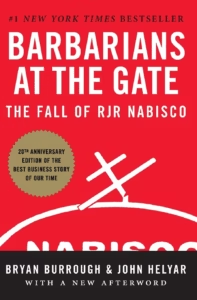
The Ultimate Story of Corporate Greed and the LBO Boom
If “Liar’s Poker” captured the culture of the trading floor, “Barbarians at the Gate” chronicles the epic, boardroom-level battle that defined 1980s corporate America: the leveraged buyout (LBO). This masterpiece of investigative journalism tells the story of the 1988 fight for control of RJR Nabisco, the massive conglomerate behind brands like Oreo cookies and Camel cigarettes.
The book is a thrilling corporate drama that reads like a novel. It details the clash of massive egos, the staggering sums of money, and the revolutionary financial tactics that characterized the LBO boom—a period when “corporate raiders” used immense amounts of debt to take over and restructure some of the nation’s largest companies.
What It Teaches About the Economy
The RJR Nabisco deal was the largest and most audacious LBO of its time, and its story is a perfect lens through which to understand a pivotal shift in the U.S. economy.
- The Rise of Private Equity: The “barbarians” of the title were the pioneering firms of the private equity industry, most notably Kohlberg Kravis Roberts & Co. (KKR). The book explains the mechanics of the LBO: these firms would borrow billions of dollars to buy a public company, take it private, and then restructure it—often by selling off assets and cutting costs—before eventually selling it again for a massive profit. This book is the definitive story of how private equity became a dominant force in the American economy.
- Shareholder Value vs. Corporate Loyalty: The fight for RJR Nabisco signaled a major shift in corporate governance. The old model of stable, paternalistic corporations with long-term loyalties to their employees and communities was being shattered by a new, ruthless focus on maximizing short-term shareholder value. The book captures the human cost of this transition, as executives and employees alike were caught in the crossfire.
- The Mechanics of High Finance: Burrough and Helyar do a phenomenal job of explaining the complex financial maneuvering involved in the deal. Readers get a front-row seat to the intense negotiations, the bidding wars, and the intricate debt financing that made it all possible. It’s a crash course in mergers and acquisitions.
“Barbarians at the Gate” is a timeless story about greed, power, and the transformation of corporate America. It is essential for understanding the forces of financialization and the rise of the dealmakers who would reshape the U.S. economy.
4. The Big Short by Michael Lewis
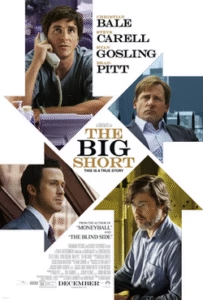
Inside the Doomsday Machine of the 2008 Financial Crisis
Two decades after he chronicled the birth of the mortgage bond in “Liar’s Poker,” Michael Lewis returned to the subject with “The Big Short,” a gripping account of the 2008 financial crisis told through the eyes of a handful of eccentric outsiders who saw it coming. While the rest of the world was drunk on the housing boom, these investors bet against the American economy—and won spectacular fortunes.
This book is arguably the most accessible and entertaining explanation of the 2008 meltdown ever written. Lewis has a unique gift for turning complex financial instruments like collateralized debt obligations (CDOs) and credit default swaps (CDSs) into understandable, character-driven plot points.
Understanding the Great Recession
“The Big Short” is required reading for any citizen who wants to understand the most significant economic event of the 21st century.
- The Anatomy of a Bubble: Lewis brilliantly explains how the crisis was built on a foundation of sand: the subprime mortgage. He shows how millions of risky home loans were made to unqualified borrowers, bundled into securities that were fraudulently rated AAA by the credit rating agencies, and then sold to unsuspecting investors around the world.
- The Misfits Who Saw the Truth: The book’s genius lies in its characters. You meet Dr. Michael Burry, a one-eyed, socially awkward hedge fund manager who pores over thousands of pages of bond prospectuses to discover the fraud. You follow a Deutsche Bank trader who accidentally creates the market for betting against the housing bubble. These stories turn an abstract financial crisis into a deeply human drama of discovery and conviction.
- Systemic Failure: The ultimate takeaway from the book is the profound failure of the entire system. From the mortgage brokers on the ground to the CEOs of the biggest investment banks and the regulators in Washington, almost everyone was either complicit, incompetent, or willfully blind. The book is a damning indictment of a financial system that had become too complex and too incentivized by short-term greed to regulate itself.
“The Big Short” is a modern classic. It explains not just what happened in 2008, but how it happened, leaving the reader with a healthy and necessary skepticism of Wall Street’s supposed infallibility.
5. The Ascent of Money by Niall Ferguson
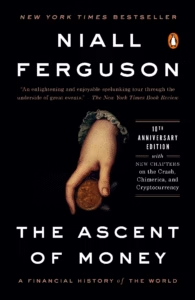
A Sweeping Financial History of the World
While the other books on this list focus on specific eras or events in American history, Harvard historian Niall Ferguson’s “The Ascent of Money” provides the grand, panoramic context. This ambitious book traces the evolution of money and finance from its ancient origins in Mesopotamia to the complex global economy of the 21st century.
This book is for the reader who wants to understand the deep historical roots of our modern financial system. Ferguson argues that finance is the essential foundation of human progress and that the history of civilization is inextricably linked with the history of money, credit, and banking.
Timeless Lessons on Finance and Power
By placing Wall Street in a global and historical context, Ferguson reveals the timeless principles that govern finance.
- The Five Pillars of Finance: Ferguson explains the development of five crucial financial innovations:
- Banking: The evolution from local moneylenders to global financial networks.
- Bonds: How the invention of the bond market enabled governments to finance wars and build empires.
- Corporations: The rise of the joint-stock company and the stock market.
- Insurance: The development of risk management and social safety nets.
- Real Estate: The booms and busts that have defined property ownership for centuries.
- From Bubbles to Geopolitics: The book connects financial history to major world events. You learn how a financial bubble in 18th-century France helped fuel the French Revolution, how the Rothschild family built a financial dynasty that influenced European politics, and how the Bretton Woods agreement established the U.S. dollar as the world’s reserve currency.
- The Human Element: Ferguson fills his narrative with fascinating stories and characters, showing that behind every financial innovation and crisis, there are human ambitions and failings.
“The Ascent of Money” is a powerful reminder that the challenges we face today—from debt and inflation to market bubbles—are not new. It provides the ultimate long-term perspective, making it an indispensable read for anyone who wants to be a truly informed investor and citizen.





